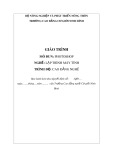
21/11/15
21/11/15 Duong Anh Duc - Digital Image Processing
Duong Anh Duc - Digital Image Processing 1
1
Digital Image Processing
Image Restoration
Image Restoration
Matrix Formulation
Matrix Formulation

21/11/15
21/11/15 Duong Anh Duc - Digital Image Processing
Duong Anh Duc - Digital Image Processing 2
2
Matrix Formulation
Matrix Formulation
of Image Restoration Problem
of Image Restoration Problem
1-D Case
1-D Case:
:
We will consider the 1-D version first, for simplicity:
We will consider the 1-D version first, for simplicity:
g
g(
(m
m) =
) = f
f(
(m
m)*
)*h
h(
(m
m) +
) +
(
(m
m)
)
We will assume that the arrays
We will assume that the arrays f
f and
and h
h have been zero-
have been zero-
padded to be of size
padded to be of size M
M, where
, where M
M
length(
length(f
f)
) +
+ length(
length(h
h) -
) -
1.
1.
Henceforth, we will not explicitly mention the zero-padding.
Henceforth, we will not explicitly mention the zero-padding.
The degradation equation:
The degradation equation:
can be written in matrix-vector form as follows:
can be written in matrix-vector form as follows:
g = Hf + n
g = Hf + n, where
, where

21/11/15
21/11/15 Duong Anh Duc - Digital Image Processing
Duong Anh Duc - Digital Image Processing 3
3
Matrix Formulation
Matrix Formulation
of Image Restoration Problem
of Image Restoration Problem
0321
0012
0001
0000
0321
3012
2101
1210
HH
1
hMhMhMh
hhh
hh
h
hMhMhMh
Mhhhh
Mhhhh
Mhhhh

21/11/15
21/11/15 Duong Anh Duc - Digital Image Processing
Duong Anh Duc - Digital Image Processing 4
4
Matrix Formulation
Matrix Formulation
of Image Restoration Problem
of Image Restoration Problem
However, since the arrays
However, since the arrays f
f and
and h
h are zero-
are zero-
padded, we can equivalently set:
padded, we can equivalently set:
Notice that the (second) matrix
Notice that the (second) matrix H
H is circulant; i.e.,
is circulant; i.e.,
each row of
each row of H
H is a circular shift of the previous
is a circular shift of the previous
row.
row.
0321
3012
2101
1210
HH
2
hMhMhMh
hhhh
hMhhh
hMhMhh

21/11/15
21/11/15 Duong Anh Duc - Digital Image Processing
Duong Anh Duc - Digital Image Processing 5
5
Matrix Formulation
Matrix Formulation
of Image Restoration Problem
of Image Restoration Problem
Example
Example:
:
A
A = length of array
= length of array f
f = 3
= 3
B
B = length of array
= length of array h
h = 2
= 2
M
M
A
A +
+ B
B – 1 = 4, say
– 1 = 4, say M
M = 4.
= 4.
0
0
1
0
h
0
2
1
0
fh
h
f
f
f


























